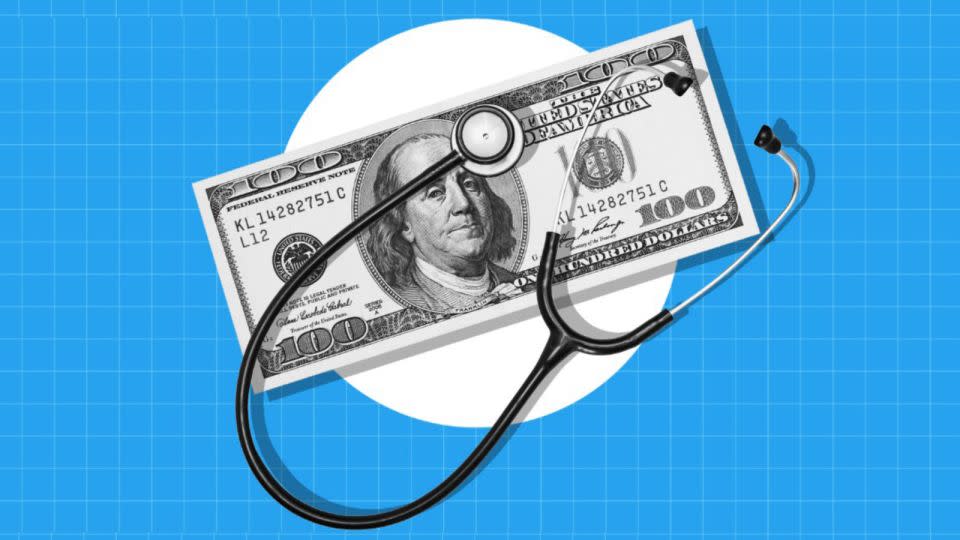Biden administration proposes banning medical debt from credit reports

In its latest effort to minimize the impact of medical debt on consumers, the Biden administration proposed Tuesday banning such debt from credit reports.
The move would remove medical debt from the credit reports of more than 15 million Americans, which would raise their credit scores by an average of 20 points and lead to the approval of about 22,000 more mortgages annually, according to a fact sheet from the office of Vice President Kamala Harris.
It’s one of the latest steps in the Biden administration’s efforts to help people contend with higher costs of living as polls show voters are not pleased with President Joe Biden’s handling of the economy.
Some 46 million people had medical debt listed on their credit reports in 2020, according to the fact sheet.
The proposed rule would also ban lenders from using medical devices, such as wheelchairs or prosthetic limbs, as collateral for loans and bar them from repossessing the devices if patients are unable to repay the loans.
The rule could be finalized early next year.
The Consumer Financial Protection Bureau has been considering proposals since last fall that would spare millions of Americans with unpaid medical bills from having that debt show up on credit reports. Creditors, who use these reports to make underwriting decisions when people apply for mortgages, car loans and other debt, would be able to use only nonmedical information in their evaluations.
“Medical debt makes it more difficult for millions of Americans to be approved for a car loan, a home loan or a small business loan, all of which in turn makes it more difficult to just get by, much less get ahead,” Harris said on a call with reporters. “And that is simply not fair, especially when we know that people with medical debt are no less likely to repay a loan than those without medical debt.”
Also, debt collectors would no longer be able to use the listing of medical debt on credit reports as leverage to pressure consumers into paying questionable bills.
Harris also called on states, localities and health care providers to take additional steps to eliminate medical debt, noting that $7 billion in American Rescue Plan Act funds are being used to wipe out the debt of up to nearly 3 million people by the end of 2026. Also, she asked them to expand access to charity care to minimize the accumulation of debt and to protect patients from aggressive debt collectors.
Big burden
There are varying estimates on just how many people have medical debt, but it’s a sizable share of the population.
In recent years, medical bills have become the most common collection item on credit reports, Rohit Chopra, the bureau’s director, said on a call with reporters.
Some 15 million Americans have a total of more than $49 billion in medical debt in collections, according to an April report from the bureau. That’s down from the $88 billion the bureau reported in March 2022, after which the three nationwide credit reporting agencies announced they would no longer include certain medical debt on reports.
Many health care bills contain mistakes, which can lead to extended battles among those in debt, health insurers and medical providers.
“Oftentimes, we see this everywhere, people give up and pay a bill they don’t actually owe just to get some peace of mind and to move on with their lives,” Chopra said.
Medical debt also hits the middle class particularly hard, according to a 2023 report from Third Way, a center-left think tank. Although these folks are more likely to have better health insurance coverage than lower-income Americans, the middle class is less likely to avoid care because of the cost but also less likely to qualify for financial assistance. At the same time, the middle class is less likely than higher-income Americans to have enough disposable funds to cover steep deductibles and out-of-pocket costs.
Almost a quarter of middle-class Americans, or 17 million people, had unpaid health care bills in 2020, according to Third Way. That compares with 22% of lower-income Americans and just under 13% of higher-income people, according to the report, which is based on US Census Bureau data.
White House efforts
The White House has sought to lessen Americans’ medical debt burden as part of its effort to help people contend with inflation and higher costs of living. In 2022, it laid out a four-point plan to help protect consumers, including having the bureau investigate credit reporting companies and debt collectors that violate patients’ and families’ rights.
Also in 2022, the three largest credit reporting agencies – Equifax, Experian and TransUnion – announced they would remove nearly 70% of medical debt from consumer credit reports.
The agencies no longer include medical debt that went to collections on consumer credit reports once it has been paid off. That eliminated billions of dollars of debt on consumer records.
In addition, unpaid medical collection debt no longer appears on credit reports for the first year, whereas the previous grace period was six months. That gives people more time to work with their health insurers or providers to address the bills. And medical collection debt of less than $500 is no longer included on credit reports.
For more CNN news and newsletters create an account at CNN.com

 Yahoo News
Yahoo News 
